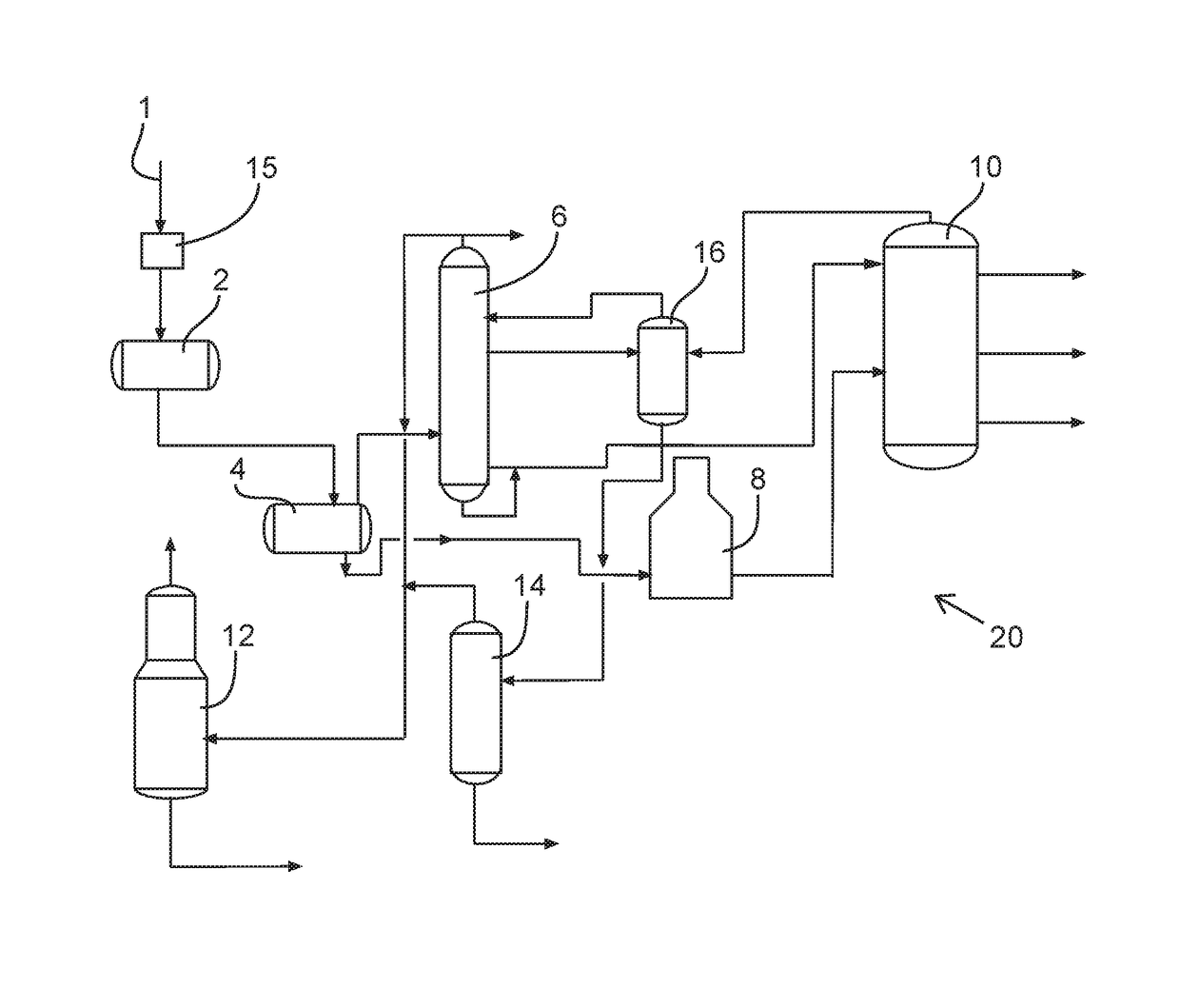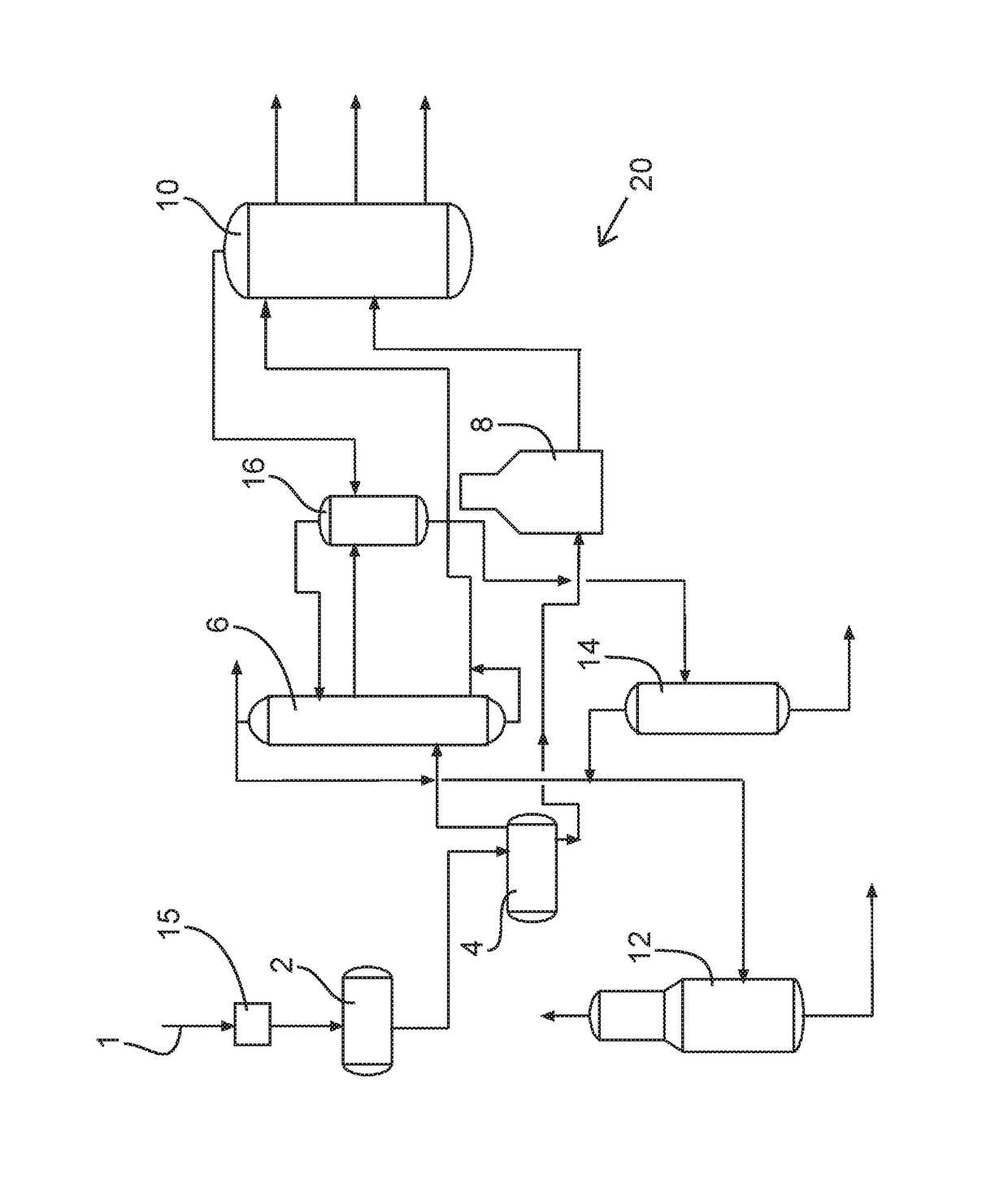Method and apparatus for reducing phosphorus in crude refining
a technology of crude refining and phosphorus, which is applied in the field of crude refining methods and equipment for reducing phosphorus in crude refining, can solve the problems of unsatisfactory and inefficient heating of crude oil past 350-400° f., strain on the entire refining system components, and low phosphorus levels downstream in the crude heater and other vessels, so as to increase the temperature of crude oil and reduce the temperature of the product , the effect of increasing the efficiency o
- Summary
- Abstract
- Description
- Claims
- Application Information
AI Technical Summary
Benefits of technology
Problems solved by technology
Method used
Image
Examples
Embodiment Construction
[0011]Referring now to the FIGURE, the crude oil 1, or raw crude, enters the refinery from a pipeline at ground temperature of about 50-70° F. The crude oil 1 is stored in tanks (not shown) until it is transferred to the crude unit 20, where it is heated by passage through at least one heat exchangers 15 to increase the temperature of the crude oil 1 to approximately 300° prior to entering a desalter 2. The heat exchangers increase the temperature of the crude oil 1 while, reducing the temperature of the finished product. Crude oil enters a desalter 2 where salt is removed, or washed, from the crude. The crude oil, now called desalted crude, is pumped through additional heat exchangers, raising the temperature in excess of 450° F., before entering a flash drum 4. In the preferred embodiment, the desalted crude is heat to 500° F. In the flash drum 4 light hydrocarbons and contaminants contained in the crude oil are vaporized, or flashed, and are thus removed from the desalted crude. ...
PUM
| Property | Measurement | Unit |
|---|---|---|
| temperature | aaaaa | aaaaa |
| temperature | aaaaa | aaaaa |
| temperature | aaaaa | aaaaa |
Abstract
Description
Claims
Application Information
 Login to View More
Login to View More - R&D
- Intellectual Property
- Life Sciences
- Materials
- Tech Scout
- Unparalleled Data Quality
- Higher Quality Content
- 60% Fewer Hallucinations
Browse by: Latest US Patents, China's latest patents, Technical Efficacy Thesaurus, Application Domain, Technology Topic, Popular Technical Reports.
© 2025 PatSnap. All rights reserved.Legal|Privacy policy|Modern Slavery Act Transparency Statement|Sitemap|About US| Contact US: help@patsnap.com


